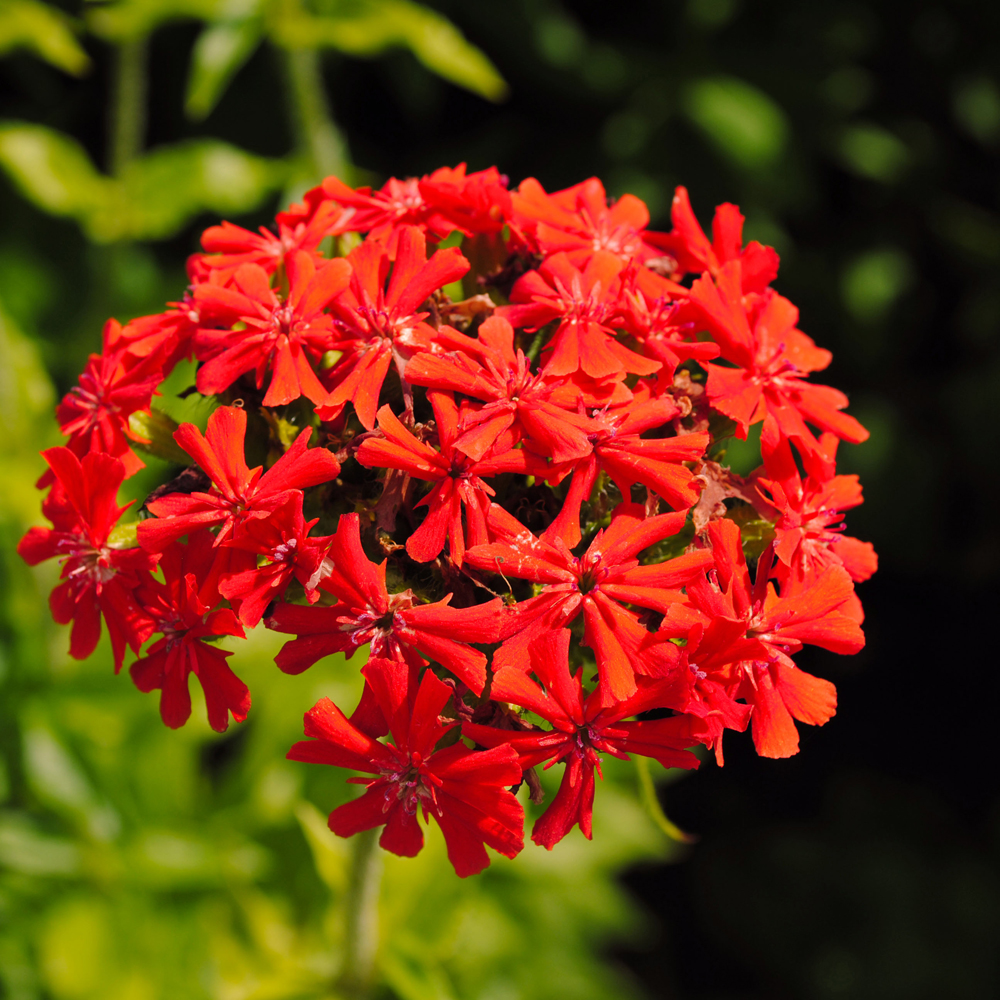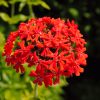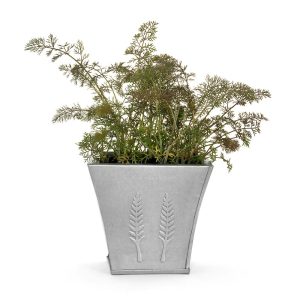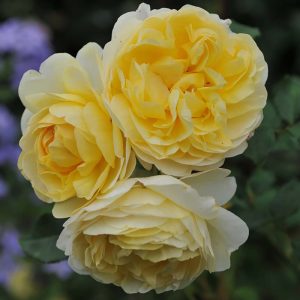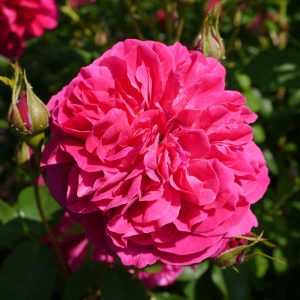Description
Lychnis chalcedonica, also known as Maltese Cross or Jerusalem Cross, is a species of perennial flowering plant in the pink family. It is native to Europe, Asia and North Africa. It produces tall spikes of scarlet, star-shaped flowers in late summer to early fall, and it’s a popular ornamental plant in gardens. The plant has large, hairy, green leaves and is a clump-forming perennial. It prefers full sun and well-drained soil and is hardy. This plant can be propagated by seed or division, and is often used in cottage gardens, wildflower gardens and as a cut flower.
Key Facts
- Common Name(s):Maltese cross
- Hardiness:Fully hardy
- How big will I get? Lychnis chalcedonica can grow to a height of 1m and a spread of 0.5m.
- Did You Know That:The name Lychnis comes from the Greek word lychnos which means lamp, as the plant was often used in medieval times to make oil for lamps?
Plant Calendar
A rough guide to how this plant will change through the year.
| Jan | Feb | Mar | Apr | May | June | July | Aug | Sept | Oct | Nov | Dec | |
| Flowering Time |  |
 |
 |
|||||||||
| Foliage Colour |  |
 |
 |
 |
 |
 |
 |
 |
 |
| J | F | M | A | M | J | J | A | S | O | N | D |
 |
 |
 |
|||||||||
 |
 |
 |
 |
 |
 |
 |
 |
 |
Care Guide

Soil Requirements
Lychnis chalcedonica prefers soil with good drainage and does not tolerate standing water. This plant can grow in soil with a wide range of pH levels, it is not picky about the pH level of the soil.

Best Position
Lychnis chalcedonica prefers a sheltered position and can cope with either full sun or partial shade.

Maintenance
Lychnis chalcedonica should be deadheaded regularly to promote the production of new flowers, it can then be cut back hard once the flowering period is over, this will help to promote plenty of fresh growth the following Spring.

Pest, Diseases and Wildlife
Lychnis chalcedonica can have problems with aphids and slugs, and it tends not to have problems with diseases. It is also known to attract bees and butterflies. It is not considered to be toxic.
